DACF Home → Bureaus & Programs → Maine Natural Areas Program → Communities, Plants, and Animals → Rare Plants → Chamaecyparis thyoides
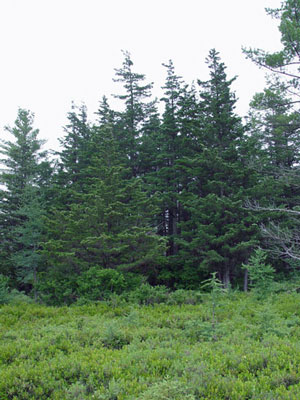
Chamaecyparis thyoides (L.) B.S.P.
Atlantic White Cedar
- State Rank: S2
- Global Rank: G4
- State Status: Special Concern
Habitat: Swamps. [Forested wetland]
Range: Mississippi and southern Florida, north to southern Maine and west to southeastern New York.
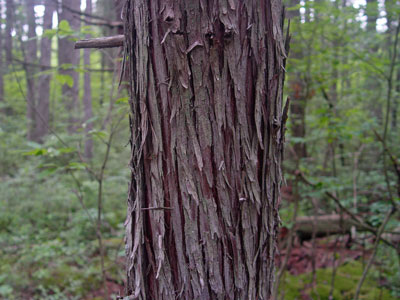
Aids to Identification: Atlantic white cedar is an evergreen tree, up to 25 m high, with small, scale-like leaves and characteristic cedar fragrance. Atlantic white cedar can be distinguished from northern white cedar, which is common and widespread in Maine, because the branchlets bearing the leaves are rounded, not flattened; by the bluish-green color of the foliage (as opposed to the yellowish-green of northern white cedar); and by the fruits which are small and spherical rather than elongate.
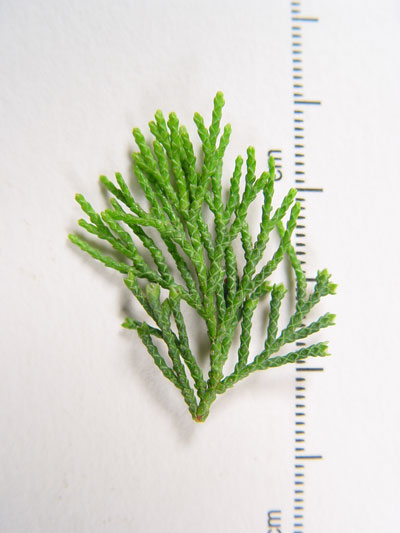
Ecological characteristics: Grows in swamps, bogs, and fens chiefly on the coastal plains. In a typical Atlantic white cedar swamp, Atlantic white cedar forms a dense canopy that allows little light penetration and limits understory growth. Since Atlantic white cedar seedlings are relatively intolerant of shade, some forms of disturbance may be required to regenerate Atlantic white cedar.
Phenology: Monoecious, but staminate and pistillate flowers are produced on separate shoots. Flowers in late spring and fruits in mid-autumn.
Family: Cupressaceae
Synonyms: Cupressus thyoides L.
Known Distribution in Maine: This rare plant has been documented from a total of 13 town(s) in the following county(ies): Cumberland, Knox, Oxford, Waldo, York.
Reason(s) for rarity: At northern limit of range; also habitat loss or repeated logging.
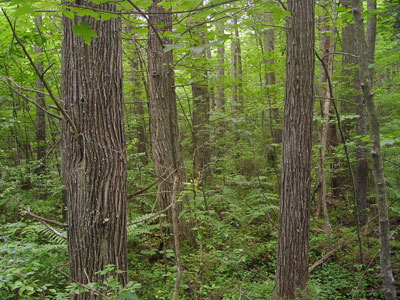
Conservation considerations: In the few large occurrences in Maine (i.e. more than ten acres of Chamaecyparis-dominated wetland), the species has regenerated well after previous harvests. Small populations would be less likely to regenerate. Conservation might, however, best be addressed to the overall community (Atlantic White Cedar Swamp, for example) as an ecological unit, allowing natural processes to dominate. Managers first need to consider whether it is the individual trees or the integrated forest community that is of interest.
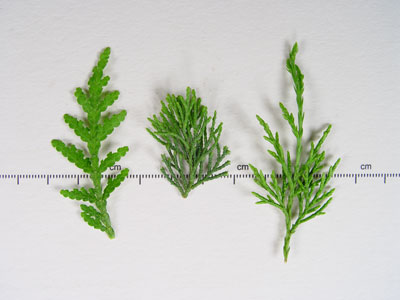 Northern white cedar (left), Atlantic White Cedar (center), and Eastern Redcedar (Juniperus virginiana, right)
Northern white cedar (left), Atlantic White Cedar (center), and Eastern Redcedar (Juniperus virginiana, right)